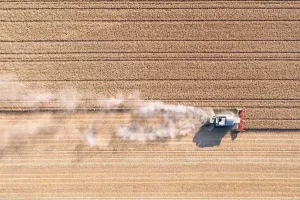Dear Lykkers! The Arctic is undergoing a dramatic transformation, and climate change is the driving force behind it. This remote and fragile region, once characterized by its vast ice sheets and pristine landscapes, is now at the forefront of the global climate crisis.
The impacts of warming temperatures in the Arctic are far-reaching, affecting not only the region’s ecosystem but also the rest of the planet.
How is Climate Change Impacting the Arctic?
1. Melting Ice and Rising Sea Levels
The Arctic is warming nearly four times faster than the rest of the world, causing the ice to melt at an unprecedented rate. The Greenland ice sheet alone is losing about 280 billion tons of ice per year, contributing significantly to rising sea levels. This meltwater flows into the oceans, threatening coastal communities worldwide with flooding and erosion.
2. Loss of Habitat for Arctic Wildlife
Animals like polar bears, walruses, and seals are losing their natural habitats as sea ice diminishes. These species depend on ice for hunting, breeding, and resting. Without it, their survival is at risk. The warming Arctic is also disrupting the migratory patterns of birds and affecting the food sources of marine life, leading to a decline in biodiversity.
3. Thawing Permafrost and Greenhouse Gas Emissions
Permafrost, the permanently frozen ground found in the Arctic, is beginning to thaw. This process releases trapped greenhouse gases, such as methane and carbon dioxide, into the atmosphere, creating a feedback loop that accelerates global warming. Thawing permafrost can also destabilize infrastructure, such as roads, pipelines, and buildings, posing risks to local communities.
4. Altered Weather Patterns
Changes in the Arctic can influence weather patterns around the globe. As the Arctic warms, it disrupts the jet stream, causing unusual weather events like prolonged cold spells, heatwaves, and heavy rainfall in other parts of the world. This phenomenon, known as Arctic amplification, highlights the interconnectedness of global weather systems.
The Human Impact: What Does This Mean for People?
1. Indigenous Communities on the Front Lines
Indigenous peoples of the Arctic, such as the Inuit, Sami, and Chukchi, have lived in harmony with the Arctic environment for thousands of years. Climate change is threatening their traditional ways of life, as melting ice makes hunting and fishing more dangerous, and rising temperatures affect their food security. These communities are often the first to feel the impacts of climate change and are key players in the global fight against it.
2. Increased Economic Activity and Environmental Risks
As ice melts, new shipping routes open, and previously inaccessible resources like oil, gas, and minerals become easier to exploit. While this may provide economic opportunities, it also poses significant environmental risks, including oil spills, habitat destruction, and increased pollution. The pursuit of these resources could further accelerate climate change, creating a vicious cycle.
Why Should We Care About Arctic Climate Change?
1. The Arctic Acts as a Global Thermostat
The Arctic plays a crucial role in regulating the Earth’s climate. Its ice reflects sunlight, helping to cool the planet. As the ice melts, less sunlight is reflected, and more is absorbed by the ocean, leading to further warming. This process, known as the albedo effect, could have devastating consequences for global temperatures.
2. Rising Sea Levels Affect Everyone
Melting Arctic ice contributes to rising sea levels, which could displace millions of people living in low-lying coastal areas. Cities like Miami, New York, Jakarta, and Amsterdam could face severe flooding, causing economic damage and forcing people to relocate.
3. Disruption of Global Food Systems
Climate change in the Arctic is also disrupting ocean currents and marine ecosystems, affecting fisheries and global food systems. As fish populations decline or migrate due to changing water temperatures, communities dependent on fishing could face economic hardship and food shortages.
What Can Be Done to Combat Climate Change in the Arctic?
1. Reduce Greenhouse Gas Emissions
The most effective way to combat climate change in the Arctic is to reduce global greenhouse gas emissions. This requires a collective effort from governments, businesses, and individuals worldwide to transition to renewable energy, improve energy efficiency, and reduce carbon footprints.
2. Protect Arctic Ecosystems and Wildlife
Conservation efforts are crucial in protecting Arctic wildlife and ecosystems. Creating protected areas, regulating shipping and industrial activities, and supporting Indigenous-led conservation initiatives can help safeguard this unique environment.
3. Support Indigenous and Local Communities
Recognizing and respecting the rights of Indigenous peoples in the Arctic is vital. Their traditional knowledge and practices are key to understanding and mitigating the impacts of climate change. Supporting their efforts to adapt to a changing climate is essential for their survival and the preservation of Arctic culture.
The Arctic is not just a remote and isolated region; it is a critical part of our planet’s climate system. The changes happening there are a stark warning of what could come for the rest of the world if we do not act now. Combating climate change in the Arctic requires global cooperation, bold policies, and immediate action. The time to act is now, for the betterment of the Arctic, and for our planet’s future.


